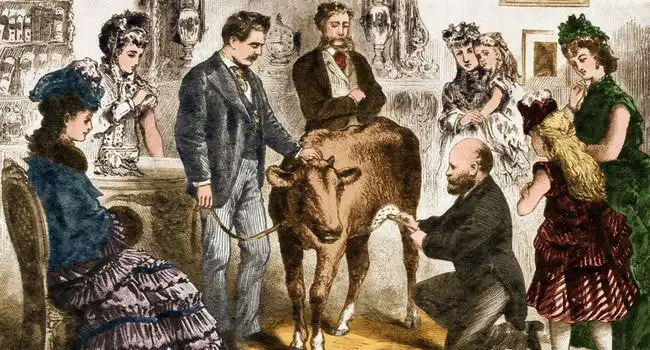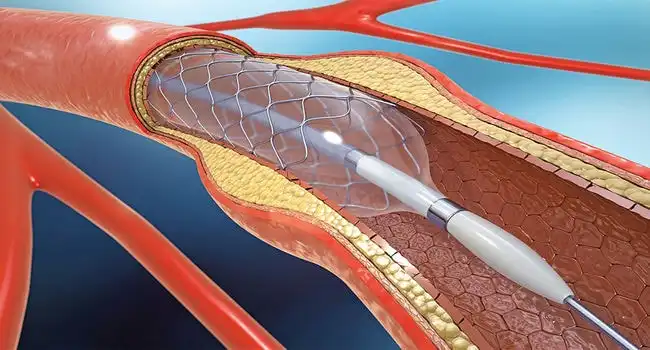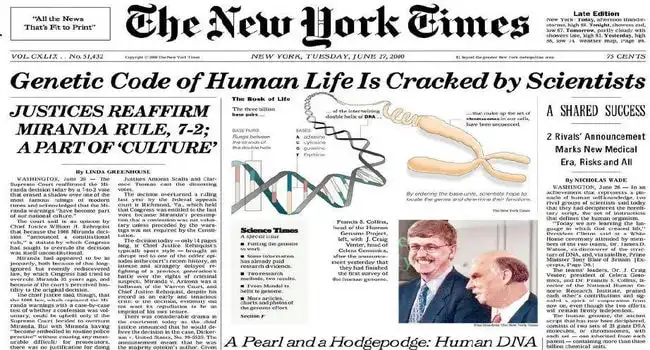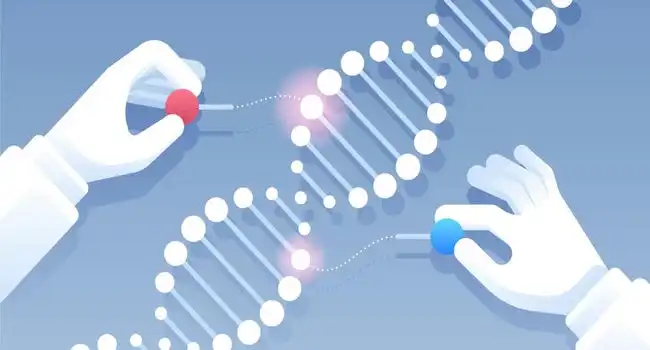Medical innovations have consistently shaped the trajectory of human health, offering transformative solutions to challenges once deemed insurmountable. Over the centuries, tireless researchers, physicians, and healthcare professionals have pioneered groundbreaking procedures, each revolutionizing the realm of medical science in its unique way. From the discovery of insulin to the advent of precise gene editing, these top 10 breakthrough medical procedures chronicle our relentless pursuit of better health, longer lives, and a deeper understanding of the human body. Dive into this list to appreciate the monumental strides medicine has taken, pushing the boundaries of what was once thought possible.
10- Insulin Therapy for Diabetes (1922)

Photo Credit: Penn Today
Sir Frederick Banting and Charles Best discovered insulin, revolutionizing diabetes treatment. Before this, a diabetes diagnosis was often fatal. Insulin therapy involves administering the hormone to regulate blood sugar levels. It has transformed countless lives, allowing diabetics to lead longer, healthier lives. Prior treatments were largely ineffective, emphasizing dietary restrictions. Insulin’s discovery was groundbreaking; it genuinely turned the tide against this ailment.
Researchers extracted insulin from canine pancreas initially. Later developments enabled human insulin synthesis, further improving its therapeutic efficacy. Modern analogs offer even better blood sugar control. This therapeutic advancement underscores the importance of persistent medical research. Diabetes management has seen other innovations, but insulin remains paramount. The discovery of insulin exemplifies the power of medical science.
9- The Introduction of Antibiotics (1928)

Photo Credit: Time
Alexander Fleming’s discovery of penicillin ushered in the antibiotic era. Bacterial infections, previously lethal, became treatable. Antibiotics target specific bacterial functions, rendering them harmless or killing them. Their discovery reduced surgery-related deaths and made complex procedures possible. Without antibiotics, even minor injuries could prove fatal. Today’s medical landscape is shaped by this revolutionary discovery. Overuse and misuse have led to antibiotic resistance, a growing concern. Nonetheless, their therapeutic contribution remains unmatched. New antibiotic discoveries are desperately needed to combat resistant strains. Fleming’s inadvertent discovery emphasizes serendipity’s role in scientific advancements. Antibiotics’ transformative power remains a cornerstone in modern medicine.
8- Anesthesia’s Development (1846)

Photo Credit: SBS
Before anesthesia, surgeries were excruciating, brief affairs. William T.G. Morton’s ether demonstration changed that. Anesthesia renders patients unconscious or numbs specific areas, enabling pain-free operations. This advanced surgical practices dramatically. Previously unthinkable procedures became feasible. Surgical mortality rates dropped significantly. Anesthesia has undergone numerous refinements since Morton’s era. Different agents and techniques cater to specific patient needs. Its discovery expanded surgery’s horizons exponentially. Patient comfort and safety increased manifold. From open-heart surgeries to transplants, anesthesia’s contribution is indispensable. Its development showcases medicine’s commitment to alleviating human suffering.
7- The Birth of Vaccination (1796)

Photo Credit: BBC
Edward Jenner’s smallpox vaccine birthed immunization practices. This revolutionary approach uses weakened pathogens to stimulate immunity. This primes the immune system against potential infections. Vaccinations have eradicated or controlled numerous diseases. Smallpox, once devastating, is now history. Polio, measles, and numerous others have seen dramatic reductions. Mass immunization campaigns save millions annually. Vaccine development requires deep pathogen understanding and immunology insights. Modern techniques employ genetic engineering for precise vaccine design. Jenner’s initial observations have blossomed into a vast protective arsenal. Immunization remains one of public health’s most potent tools.
6- Cardiac Catheterization (1929)

Werner Forssmann’s self-experimentation introduced cardiac catheterization. This minimally invasive procedure investigates heart’s chambers and vessels. It aids diagnosis and guides interventions. Previously, direct cardiac evaluations were impossible without open surgery. Catheterization’s advent changed cardiovascular medicine. Procedures like angioplasties and stent placements became feasible. It provided unparalleled insights into heart function and pathology. Its diagnostic precision guides therapeutic decisions accurately. Modern equipment and techniques further enhance its safety and utility. This innovation revolutionized cardiovascular care, offering improved outcomes for countless patients.
5- Discovery of X-rays (1895)

Photo Credit: History
Wilhelm Conrad Röntgen’s accidental discovery of X-rays revolutionized medical imaging. These electromagnetic rays penetrate tissues, creating contrasted images. Bones, tumors, and internal structures became visible non-invasively. Diagnoses became more accurate. Fractures, infections, and various pathologies could be visualized directly. Technological advancements have enhanced X-ray clarity and safety. They form the basis of various imaging modalities. Computed tomography (CT) leverages X-ray technology. Their discovery marked a pivotal turn in clinical diagnosis. They’ve facilitated early disease detection and management. X-rays’ role in modern medicine is undeniably foundational.
4- Magnetic Resonance Imaging (1970s)

Prior to MRI, medical imaging relied largely on X-rays and CT scans. Dr. Raymond Damadian proposed the idea of using magnetic resonance for detecting cancer. MRI, a non-invasive procedure, provides detailed images of the body’s internal structures. By leveraging magnetic fields and radio waves, MRI captures unparalleled soft tissue contrasts. This technology offers insights into neurological, musculoskeletal, and vascular systems without ionizing radiation. MRI’s diagnostic capability has redefined the approach to various ailments. Advancements like functional MRI (fMRI) now observe real-time brain activity. The development of MRI has greatly impacted early detection, diagnosis, and treatment pathways. This advancement stands as a testament to the medical field’s drive for perfection. MRI’s contribution to healthcare showcases technology and medicine’s symbiotic relationship.
3- Organ Transplantation Pioneering (1954)

Photo Credit: Harvard Medical School
Organ transplantation fundamentally changed the prognosis for end-stage organ diseases. Dr. Joseph Murray performed the first successful kidney transplant in 1954. This procedure offered hope, replacing failing organs with healthy ones. Initial transplantation faced organ rejection, a major hurdle. The development of immunosuppressive drugs, however, increased transplant viability. Today, heart, liver, lung, and kidney transplants save numerous lives annually. Transplant medicine’s complexity spans beyond surgery, encompassing donor matching, immunology, and post-operative care. Transplantation’s success is a testament to medicine’s determination to defy natural boundaries. It signifies a collaborative triumph, combining surgical skills, immunology understanding, and patient care. Organ transplantation remains one of medicine’s most awe-inspiring accomplishments.
2- Human Genome Project Completion (2003)

Before the Human Genome Project (HGP), human DNA remained largely a mystery. Launched in 1990, the HGP aimed to map all human genes. This ambitious endeavor spanned 13 years, involving international collaboration. Decoding the human genome provided insights into disease predisposition, genetics, and evolution. It laid the foundation for personalized medicine, enabling treatments tailored to individual genetic profiles. Understanding our genetic makeup has opened doors to targeted therapies and diagnostics. This breakthrough in molecular biology and genetics exemplifies the potential of collaborative scientific endeavors. The HGP’s impact is vast, transforming medicine, biology, and our understanding of human evolution. Its success stands as a monumental achievement in the annals of scientific exploration.
1- Development of CRISPR-Cas9 Gene Editing (2012)

Before CRISPR-Cas9, gene editing was a complex, imprecise process. Dr. Jennifer Doudna and Dr. Emmanuelle Charpentier harnessed the CRISPR system’s potential for precise genetic modifications. This revolutionary technology allows specific DNA sequence targeting and modification. Its implications are vast, offering potential cures for genetic disorders and advancing research across biological fields. By understanding and utilizing bacterial defense mechanisms, researchers unlocked a powerful tool for genome engineering. CRISPR-Cas9’s precision and adaptability promise revolutionary therapeutic interventions. It signifies a quantum leap in genetics, embodying the pinnacle of scientific innovation. Ethical considerations aside, CRISPR-Cas9’s potential is boundless, marking a new era in genetic research and therapeutics.


